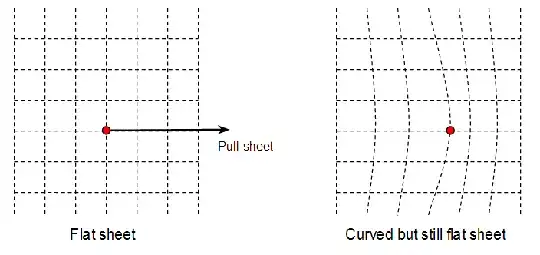When you're talking about curvature it's important to distinguish between intrinsic and extrinsic curvature. I struggled to find a good summary of the difference: page 6 of this PDF discusses it, or Google for similar articles.
A very common analogy for spacetime curvature is the rubber sheet, and this is an example of extrinsic curvature. We take the two dimensional sheet and deform it in a third dimension to create the curvature. With extrinsic curvature it's entirely reasonable to ask if we could move in the third dimension to see "behind the sheet".
However the spacetime curvature described by general relativity is intrinsic not extrinsic curvature and is not caused by bending the three dimensional space in some hypothetical fourth dimension. So you can't move out of spacetime to see what's behind it.
It's difficult to explain intrinsic curvature, but let's try by going back to the rubber sheet. Suppose you keep the sheet flat, but you grab the sheet at a point and pull the sheet in some direction:

The grid is supposed to show how the sheet has been stretched. The sheet is still 2-D, because we haven't stretched if upwards or downwards, but it's been deformed so that the spacing between grid lines changes. The key think (and the hardest to understand intuitively) is that for Flatlanders living on the sheet the grid lines still look straight. A Flatlander walking along the centre vertical grid line would think they were walking in a straight line, but would actually be moving in a curve.
This type of curvature is what happens in general relativity. It's intrinsic not extrinsic. So to back to your question, you can't move behind the universe because there is no behind to move into. There are only the three spatial and one time dimensions - it's just that they are intrinsically curved.

